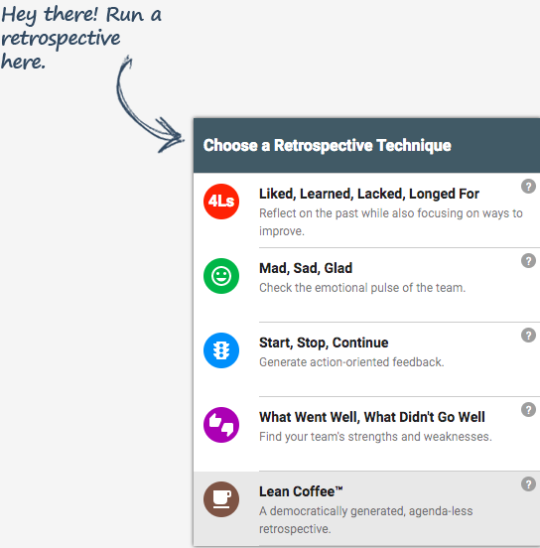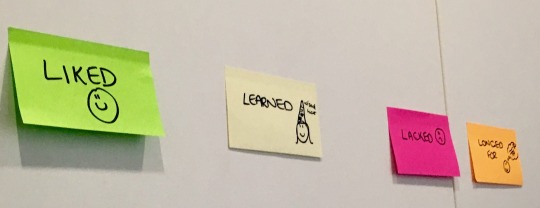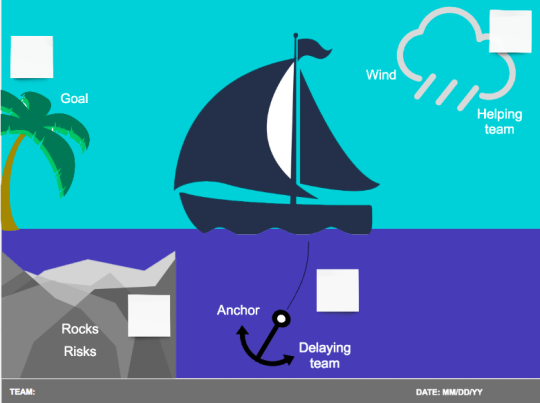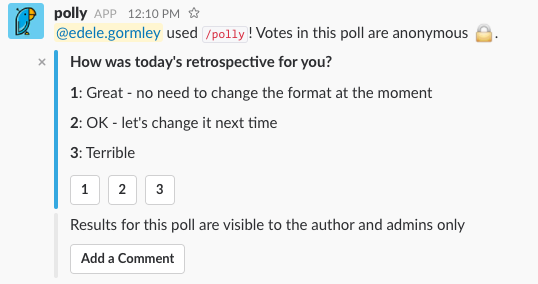I’ve met many agile advocates that simply won’t accept a job that involves working with remote teams. Whether that comes from fear or lack of experience, I feel it’s important to assure these people that it ain’t all that scary. Whilst this post focusses on my favourite ceremony, the retrospective, if you have any general questions on working with remote teams you can contact me here.
Tooling
There are so many tools out there - some amazing, some not so great. However, there are some basic requirements that should be in place regardless of what software you choose:
- Internet connection - I once tried to run a backlog refinement session where I had a terrible connection. The session was completely unproductive as the sound was crackling and echoey and in the end I had to reschedule for when I was back in the office. If you have remote workers, they should have a decent internet connection - if they can’t handle video calls they either need an upgrade or to work from somewhere with a better connection. Communication completely breaks down without this.
- Video and sound - my rule of thumb is that if one person has their video turned on, everyone should. I really encourage the use of video amongst remote teams, it helps to personalise things a little better and to help individuals remember they’re talking to actual people - not just a robot on the screen. Also, it can be good to have less work-focussed conversations, such as when a colleague changes their appearance, or if they’re simply having a sandwich on camera!
- Software and websites - I am a massive advocate for sharpies and whiteboards. I’ve tried being the only person in the office with a camera aimed at a physical board but trust me, it does not work so well and the rest of the attendees will become super bored if you’re a slow writer like I am!
Tools I recommend
I’ve tried various tools over the years and here are some that I recommend (I am in no way affiliated with any of these):
- Retrium - This is my current favourite and is super easy to use. They offer a number of games from ‘mad, sad, glad’ to ‘lean coffee’ and you’re all set with the push of a button. I love their timer functionality which will send an alert to all attendees when the timebox has ended. I believe the functionality is intended for you to set a timebox for the entirety of the retro, such as 60mins, but I prefer to use it for each part of the retro, e.g. 10 mins for gathering topics, 20mins for clustering similar notes etc.

- Trello - Yes I know this isn’t marketed as a retrospective tool, but if you’re using it anyway it can be a good option. In this case, simply create a new board for your retrospective and choose a column based game, for example 4 L’s (Liked, Learned, Lacked, Longed For) and ensure every team member has been added to the board so they can contribute. Voting on topics can be a bit difficult but generally I ask each team member to leave a comment with either +1 or the 👍 thumbs-up emoji.

- RealtimeBoard (now Miro) -
lots of configurable templates which look closer to a real board rather than using the column based layouts like the other tools(update Sep 2019: since re-branding, Miro have a limited number of templates available which are all column based - I couldn’t find the Sailboat shown below). They have various demo boards and it’s nice to be able to print something pretty at the end of the retrospective. The user interface is very similar to photo editing software, which I’ve never been amazing at, so I do find it a little bit trickier to use.

Adapt your style
I’m so lucky that I get to work with a mixture of co-located and distributed teams. This gives me the opportunity to explore different techniques - my co-located teams love using lego for retrospectives, but this would only work remotely if each attendee had their own set of lego at their various locations. I’ve observed so many coaches and Scrum Masters using the same style of retro over and over again (hashtag: #boring). Remember to be creative, and consider new ways to engage your teams, where ever they might be located.
Tip: sending out a simple poll after the retro to collect feedback from attendees can help you to follow-up with improvements. I use Polly for Slack and it works a treat (Polly also works with Microsoft Teams)!

Cadences
Yes you can argue that these are important no matter what type of team you have, but they are crucial when it comes to distributed teams. When you’re working across different countries and timezones, people need to know when each ceremony will happen. Try to keep it consistent, for example at the same time every 2 weeks so that there’s less confusion. I like to send calendar invitations to recur, as well as a slack reminder the day before a retro, so that if something comes up (for example Bob has a dentist appointment at that time), you can be made aware in advance (tip: helps with rescheduling if capacity is low).
Key takeaway
There’s no need to shy away from working with remote teams. There are a lot of ways you can engage the team. If you’re just starting out with a new distributed team, I recommend trying to get together in the one location to form your working agreement together before branching out to your global locations. If you’re not sure where to start with working agreements, check out my post on them.